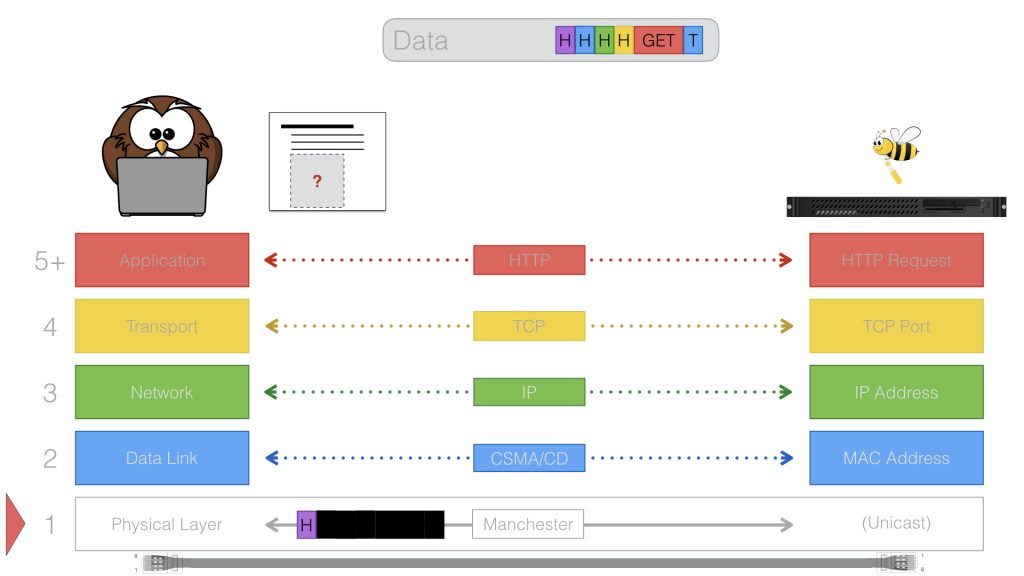vLab: Layer 1 (Physical Layer)
Layer 1, also referred to as Physical Layer, is the lowest layer of the vLab model:

It forms the link between networking hardware and the physical medium connecting two devices. The connection can rely e.g. on a copper cable, electromagnetic waves (wlan) or fiber.
The sender of a message has to encode the information as signal to fit to the characteristics of the medium, the receiver has to interpret the received signal to receive the information again.
A signal is something that can be changed deliberately over time at the sender side while the receiver can measure the changes. As example the sender could change the voltage level on a connection depending on the information he wants to transmit.
Communication Protocols are conventions on how something is encoded and decoded. Protocols on the physical layer encode and decode logical data (a sequence of bits) into physical signals (e.g. a sequence of voltage changes).
The receiver then interprets the received signals, decodes it again into the logical data and hands it to a higher layer for further processing.
Example encodings include e.g. Non-Return to Zero (NRZ) or Manchester encoding.
Learn more about Layer 1 mechanisms and protocols in our free Massive Open Online Course: iLabX – The Internet Masterclass




